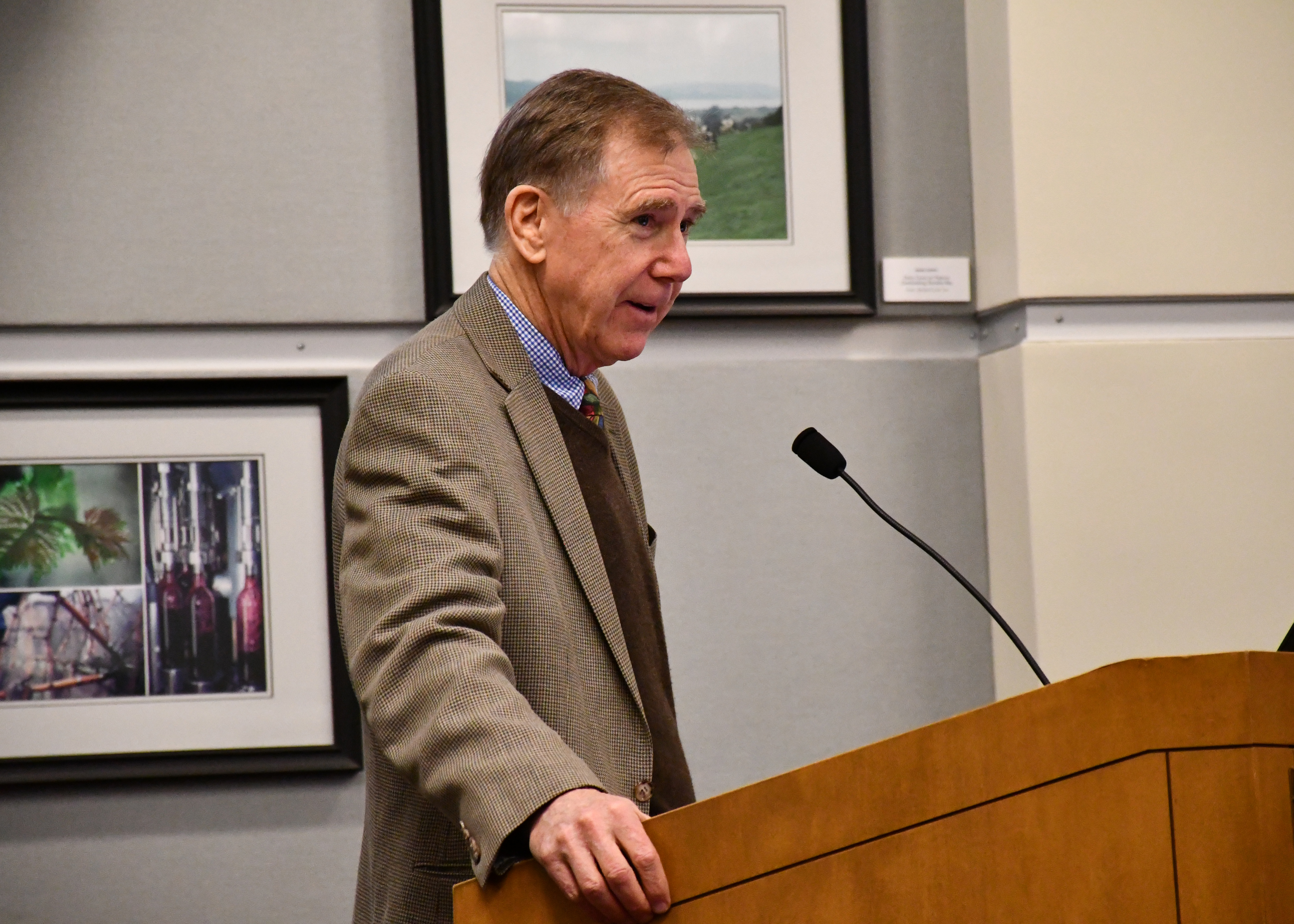In a hearing for the California State Board of Food and Agriculture on Tuesday, Daniel Sumner, a University of California, Davis, professor and agricultural economist, painted an optimistic vision for California agriculture in 2050.
Sumner was presenting recent findings that he plans to later publish, a project that began as an informal ask from CDFA Secretary Karen Ross.
“There will be lots of ups and downs, and some of them will be fundamental changes,” Sumner predicted. “But we’ve seen lots of fundamental changes over the last 30 years.”
Overall, farm revenue and net incomes will continue to grow. By 2050, Sumner expects California will have incentives to address some of the problems currently facing the state's agricultural systems. As evidence, water scarcity during the drought has already been unleashing incentives. The state is moving toward laws that will enable farmers to own and trade the groundwater beneath them. Owning it is an incentivize to innovate.
Future gains will be found by “treating California as the unique place it is.” It will not excel with crops grown in other states, such as cannabis and hemp. He offered chickpeas as a commodity that could see rapid growth in the Mediterranean climate of California.
Climate change will impact production, he said, but “people are still going to eat.” Sumner believed state regulations will still be flexible enough to allow farmers to adapt to new climates. Ranching will actually benefit from a warming world, as less snowpack opens up mountain rangelands for more of the year.
Sumner called it a good sign that companies are investing in water. Some local aquifers may see a monopolizing of land with access to water. But in “the broad brush for the future of California agriculture," he was not worried.

UC Davis Professor and Ag Economist Daniel Sumner
He did have concerns over the lagging public investment in research and development. While this is a trend in rich countries, developing economies like China are maintaining their investments as they grow. Those investments will lead to more mechanized solutions to labor costs.
Growers unable to adapt to California’s labor pressures will leave, he said, with another grower filling the space. Another response to labor has been the shift away from some field crops — though not rice. For some niche markets where the consumer is willing to pay more, high-priced labor will not be a problem.
For upscale winegrape operations, the labor costs have little impact, though rising land values are hurting revenues. Warming climates are also affecting the grape varieties available and the type of wine produced, which can cripple an established brand.
“If you have spent 15 years convincing the world that you are the place to grow cabernet sauvignon,” he said, “how do you still convince them when it’s now something else?”
Consolidation is another trend that will continue. He said Wisconsin’s dairy market is strong because consolidated management systems allow a farmer to outcompete others by spending less time milking cows and more time “thinking for a living.” As other dairy farmers adopt “California-style innovations” in efficiency, those farmers also have the cheap feed, lower wages and other advantages not available in California.

CDFA Sec. Karen Ross
On a similar note, he said the larger growers here are better suited to handle the rising demands from buyers. A farmer with a few dozen acres won’t have the time to deal with a number of certifiers coming by every month, he said.
With trade, the Asian market is peaking while most of the growth is in Africa, which may not benefit California growers until after 2050. Pointing to a rise in middle-income consumers across the planet, Sumner surmised that farmers will see resource constraints, particularly with land and water availability, before consumer demand would drop. The greatest source of rising incomes is India – which is why Indian walnut tariffs are such bad news.
“You don’t want them to get used to doing that kind of stuff,” Sumner explained. “You’ve got to have the market access.”
Australia, a competitor in tree nuts, has already maxed out its available resources. Chile certainly will rise to compete with California and South Africa will “if it can get its act together,” said Sumner. Countries in the middle east are also a possibility.
Having launched a barrage of economic forecasts at the board, Sumner finished with one suggestion: Encourage the investment into research and development that firms and farms cannot do alone.


